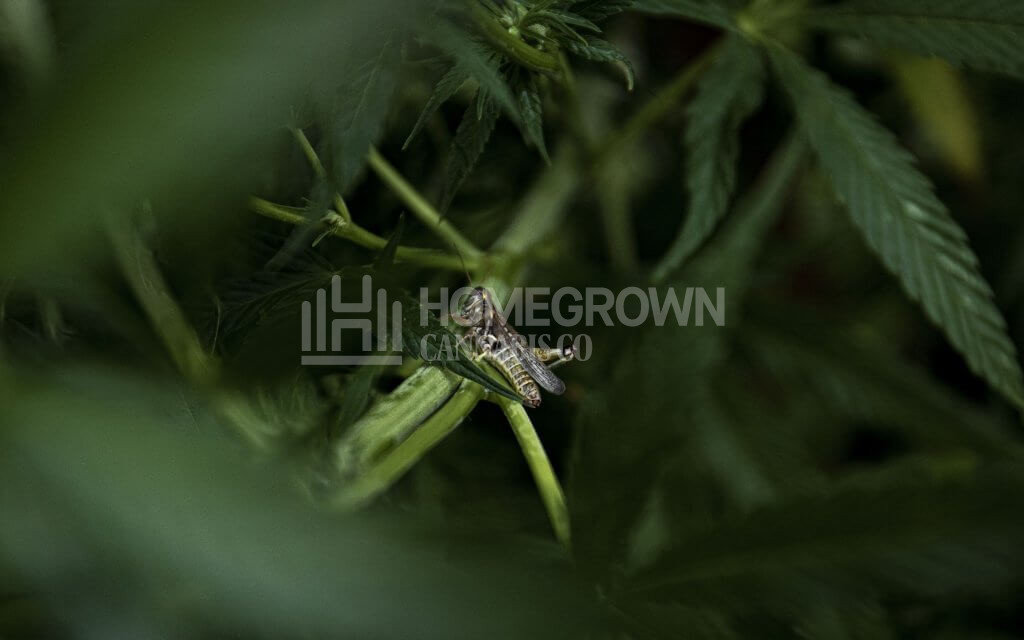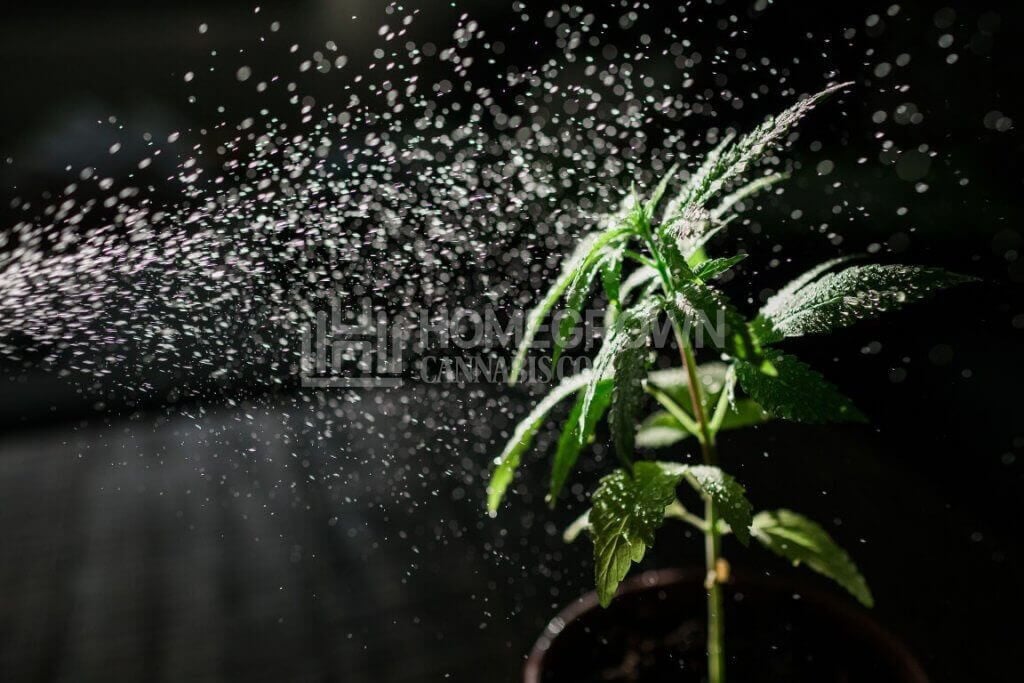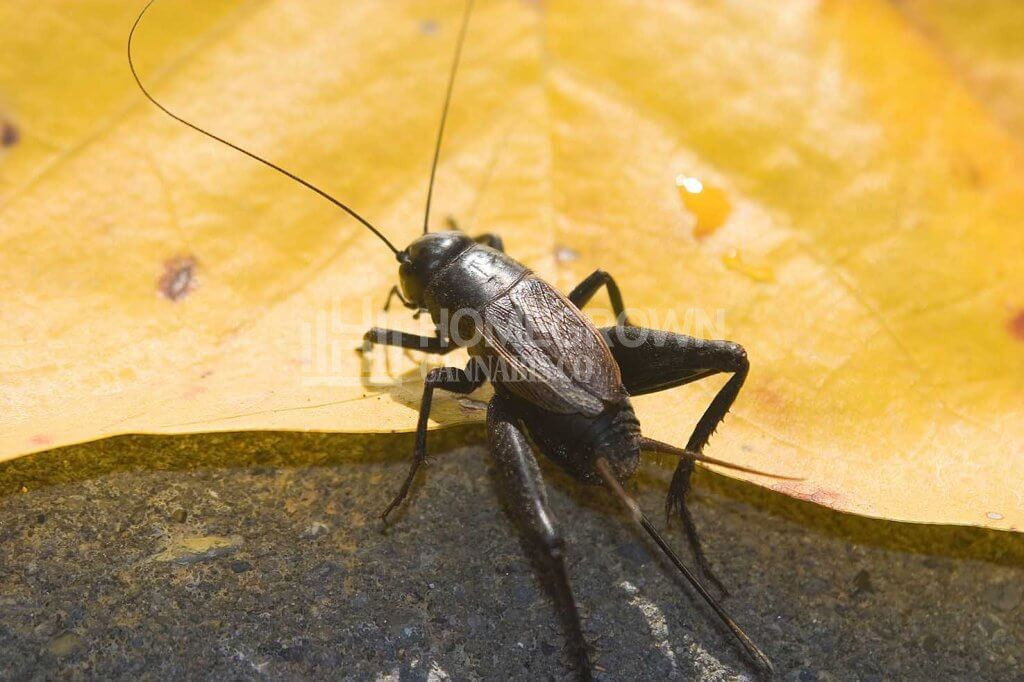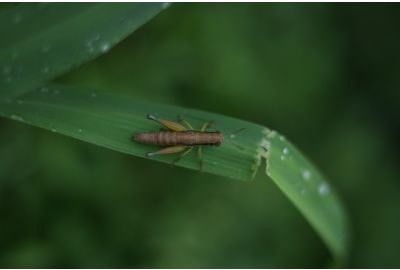How To Get Rid Of Crickets In The Garden
There's a fine line between insects and pests, and crickets crossed it ages ago. It's one thing to hold concerts at night, but damaging cannabis is where we draw the line. That's why understanding how to get rid of crickets in the garden is a necessity, and we've got you covered.
We'll start by filling you in on all you need to know, including how to spot signs of an infestation. We'll then share our best cricket pest control measures and ways to keep them away. As a parting gift, there's an FAQ section to help you find the info you need quickly.
Once you understand what you're dealing with, you'll get the job done speedily. Now, let's jump straight into it.

All you need to know about crickets
How to get rid of crickets in the garden is an art that requires study. Despite being a pretty common insect, we often know little about them. That's why we get confused during an invasion, and eliminating them becomes a challenge.
These nocturnal insects are from the order Orthoptera, distantly related to grasshoppers. You can find crickets in the garden (indoor or outdoor), forests, fields, and underground holes. There are over 900 species, including the common house, field, camel, mole, and bush crickets.
Some people eat them, others regard them as good luck, and they're sometimes pets. Either way, any cannabis destroyer is an enemy, so knowing how to get rid of crickets in the yard comes in handy.
Cricket’s physical characteristics
Crickets have long 1–2 inch round bodies (thorax) in white, yellow, green, brown, black, or red. They have two long antennae (feelers) on top of their round head and six legs. They also have wings lying flat on their backs, even though they don't fly.
The females have a thin tube-like structure on their abdomen (ovipositor) for laying eggs. Baby crickets (nymphs) look like adults, just tinier and without wings.
You'll notice that the crickets in the garden have longer back legs that are thicker at the thighs—they provide the required jumping power.
Different species have small variations in their looks. For instance, the camel cricket has a hump, thus the name. All in all, they generally look the same, and you’ll recognize one when it appears.
Cricket’s life cycle
You hear crickets in the garden chirping when mating season arrives in late spring or early summer. The sound comes from the male adults rubbing their wings together to attract a female. The female then listens to pick out the largest male and initiates the mating process.
Once fertilized, she transfers her eggs to the soil through the ovipositor, where they stay throughout winter. The eggs hatch into nymphs which molt 6–12 times in about three months to become adults. The adult crickets in the garden only eat and mate throughout their remaining life span (6 weeks).
A female adult lays around 15 eggs per day; that's as many as 200–400 in her lifetime!
Do crickets eat plants and leaves?
Crickets are omnivorous, so they eat plants and leaves alongside living things like aphids and their species' nymphs. They especially enjoy seedlings, leaves, and roots, all of which are tender enough to their liking.
Left unchecked, and when the population grows, they cause serious damage to weed plants.
Damage and signs of infestation in the garden
Learning how to get rid of black crickets and their brethren starts with recognizing signs of an infestation. These include:
- Presence of holes in the leaves, fruits, stems, and other parts they've munched on.
- When you hear them sing the song of their 'people' once it gets dark.
- Visible holes in the ground and tiny hills or mounds of soil.
- Mole crickets may even pull shoots and seedlings underground through tunnels.
The impact isn't problematic most times unless you've really let them run wild.

Cricket pest control: how to get rid of crickets in the garden
Before getting rid of them, ask yourself: are crickets in the garden good or bad? Having a few of them is actually beneficial—they only become a problem when their population explodes.
Here are a few ways they help:
- They savor harmful weed (not cannabis) seeds and seedlings.
- Parasitic wasps lay their eggs in them, and they're food for lizards and spiders—living things that feed on pests.
- Crickets in the garden enjoy eating other tiny pests like aphids.
- They decompose dead plants and break them down into humus that enriches the soil.
- Their waste is valuable manure.
That being said, it's best to reduce their population and stop their reproduction rather than exterminating them completely. Let's now explore some of the best ways to get rid of crickets.
How to get rid of crickets naturally
Everyone should learn how to get rid of crickets naturally. Natural methods and organic repellents are safe to use on cannabis and the environment. Chemical solutions often contaminate the surfaces they contact, so only use them as a last resort.
Here are some useful ideas to get rid of crickets in the yard naturally:
- Catch them manually or use traps, then release them far away.
- Vacuum the little critters up.
- Bring in predators like frogs, beetles, rats, lizards, and salamanders.
- Drop biological control agents, such as nematodes, in cricket holes.
- Use homemade cricket poison and repellent sprays like insecticidal soap, vinegar, garlic, spicy pepper, and essential oils like neem oil.
Molasses cricket trap
A molasses cricket trap is one of the easiest yet most effective ways to get rid of these tiny fellas. The sweet smell always seduces them out of whatever hole they're hiding in. They then hop in and drown in the sticky solution.
Simply mix a cup of molasses with two liters of water, and pour it into a container you're not using. Place the trap wherever you think the crickets in the garden are hiding. Check the trap later to dispose of the dead ones.
Pesticide for crickets
Pesticides are cricket poison since they instantly kill them on contact. They're organic or inorganic, and they get the job done quite quickly. Repelling crickets is better than killing them right off the bat, so opt for these when natural methods fail.
An organic pesticide for crickets is safer for your cannabis and environment than chemical ones. They include boric acid, diatomaceous earth, pyrethrin, and spinosad.
Inorganic ones often pollute the environment and contaminate your weed, so avoiding them is a great idea.

Prevention: how to keep crickets away from your crops
After successfully removing them from your garden, you need to know what keeps crickets away. No one wants to redo the same job over and over, no matter what it is. Effective preventive measures ensure you don't have to.
Here's how to keep crickets away:
- Trim the grass and maintain neat and light vegetation in your garden.
- Make sure you vacuum or handpick all the eggs.
- Inspect the previously infested area to remove dead leaves.
- Reduce the light intensity or use bug lights that won't attract them.
- Decomposing materials invite crickets in the garden, so dispose of trash far away.
- Try not to remove cricket’s predators.
- Seal the lower cracks and entry points to your indoor garden.
- Employ proper airing and prevent dampness to avoid creating breeding grounds.
- Plants with a strong aroma like cilantro, garlic, and rosemary repel crickets.
- Plant legumes like beans and peas since their nitrogen bothers crickets.
- Occasionally spray natural cricket remedies to ward them off.
FAQs about how to get rid of crickets in the garden
There you have it—all the nitty-gritty of how to get rid of crickets in the garden. Take a look at the frequently asked questions below to answer anything we've left out:
Are crickets good for the garden?
Yes, crickets are good for the garden.
As annoying as they may be, crickets are useful. They help enrich the soil, attract important pest predators in the garden, and feed on weeds and harmful pests.
We advise reducing their numbers when they become excessive, so try not to eradicate them completely.
What plants do crickets eat?
What plants do crickets eat? More like what plants don't they eat?
Crickets have an insatiable appetite, and an infestation by ravenous ones destroys several seedlings in a day. They especially enjoy harmful weeds, but any plant will do.
Fortunately, there's a light at the end of this tunnel. The nitrogen from legumes irritates them, while those with intense flavors disturb them—use such plants to repel crickets.

Hop on to a cricket-free garden life
There's a general love-hate relationship with crickets. Despite this, it's clear we'd choose our cannabis over them anytime. Now that you understand how to stop crickets from wreaking havoc in your garden, you're good to go.
Bask in your hard work and relish the cricket-free space you've created. Remember to use natural remedies to avoid damaging your plants and environment. Enforce the cricket pest control measures best for you, and you'll be just fine.
For more helpful articles about weed problems, visit our troubleshooting page, where we approach a plethora of different growing issues. Browse our website for tips and tricks to easily grow healthy, stress-free marijuana.
About the author: Parker Curtis
Parker Curtis has around a decade of cannabis-growing experience, specialising in soil-less and hydro grows. He’s mastering outdoor, greenhouse, and indoor grows.
